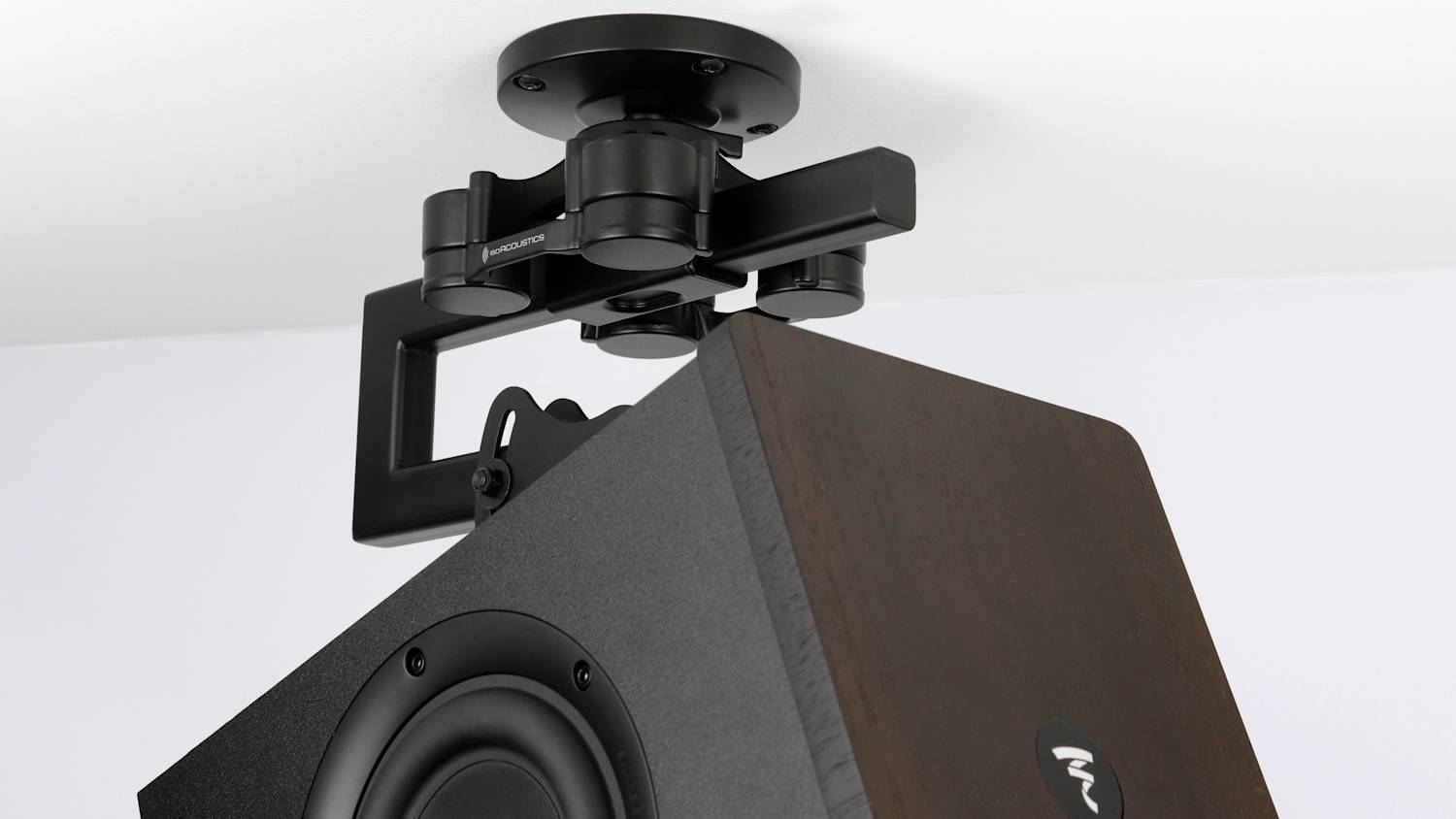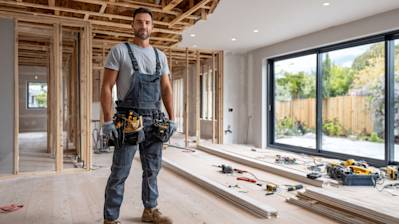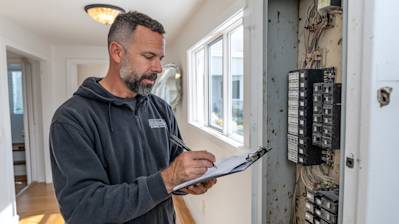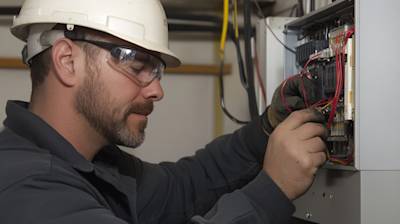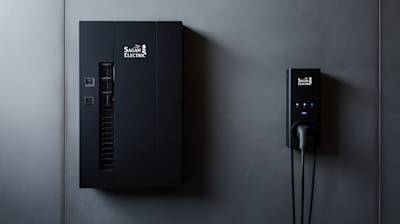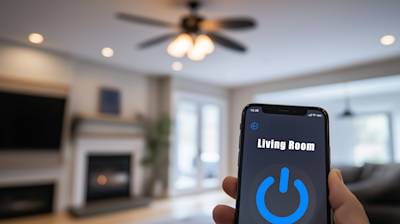In the world of audio, in-ceiling speakers are a wonderful concept that have been increasingly catching on with home owners and audio enthusiasts alike. There are plenty of reasons why you might consider installing this type of speaker setup in your home or office. In-ceiling speakers can be a fantastic addition to just about any home or office environment, offering superior sound quality and a sleek, discreet finish that's hard to beat. Throughout this post, we’ll run you through everything that you need to know about this unique type of speaker setup, from the benefits and types, to installation process and maintenance. By the end of your journey through our in-depth guide, you’ll be an expert on in-ceiling speakers.
A Deep-Dive into In-Ceiling Speakers
In-ceiling speakers, as their name implies, are a type of speakers that are installed in the ceiling of your home or office. They're flush-mounted, meaning that they blend in seamlessly, providing an almost invisible speaker system. But don’t let their hiding place fool you; in-ceiling speakers can pump out powerful music, podcasts, TV audio, and more with stunning clarity. These devices are part of the wider family of architectural speakers, a group that also includes in-wall speakers.
Benefits of In-Ceiling Speakers
There are plenty of reasons to love in-ceiling speakers. Some of the major benefits include:
- Space-Saving: As they are installed in the ceiling, these speakers do not take up any extra space in your room. This makes them ideal for compact places where every inch counts.
- Seamless Blend: Since these speakers are uniquely designed to blend into the ceiling, they add a more aesthetic touch to your home without visibly altering the design.
- Superior Sound Dispersion: The placement of these speakers allows for a 360-degree dispersion of sound, creating a room-filling "audio blanket" which is difficult to achieve with conventional speakers.
- Versatility: They work for a variety of audio needs including home theater systems, multi-room audio systems, and even outdoor systems (with weatherproof products).
Types of In-Ceiling Speakers
When it comes to in-ceiling speakers, there are multiple types to choose from:
- Coaxial Speakers: These have the woofer and tweeter aligned along the same axis. This alignment allows them to deliver a unidirectional sound that covers a wider area.
- Component Speakers: These feature separate woofers and tweeters, along with external crossovers. This ensures that each part of the sound frequency spectrum is separately handled with precision.
- Stereo Input Speakers: These types of speakers include two tweeters and a dual voice coil woofer to provide both left and right stereo channels from a single speaker.
Understanding the Installation Process of In-Ceiling Speakers
Installing in-ceiling speakers involves following a set of defined steps:
- Locating the Studs: Use a stud finder to locate the ceiling joists in your preferred installation location. This is necessary to avoid any damage to the structure of your home.
- Creating the Hole: A template is often included with your in-ceiling speaker to help you outline the size of the hole you need to create in the ceiling.
- Installing the Speaker: Once the hole is made, the speaker is mounted flush to the ceiling. Wires are connected, the speaker is inserted in the hole, and then secured with screws.
Maintenance and Longevity of In-Ceiling speakers
In-ceiling speakers, when properly installed and maintained, can have a long life.In terms of maintenance, it’s usually quite light. Dusting the speakers regularly is good practice, ensuring that no build-ups occur on or around the speaker grills. Using a soft, dry cloth for this task is usually sufficient. Most importantly, using a home surge protector is recommended as it keeps your speakers safe from sudden voltage spikes that might cause damage.
Selecting In-Ceiling Speakers: What to Look For?
While shopping for in-ceiling speakers, here are few pointers to keep in mind:
- Size: Larger in-ceiling speakers generally produce better and louder sound, but smaller ones blend into the décor better. So, choose based on your preference and need.
- Power: Make sure to check the power handling capacity of the speaker to ensure it matches with the amplifier or receiver’s output.
- Build Quality: Look for speakers with moisture-resistant features if you plan on installing them in bathrooms, kitchens, or outside.
- Sensitivity: Higher sensitivity means the speaker will use less power to output sound, so look for speakers with high sensitivity.
- Price: While an expensive speaker is likely to offer superior sound quality, make sure to consider your specific needs, budget, and the speaker’s features.
Famous In-Ceiling Speaker Brands
There are several renowned brands known for their in-ceiling speakers:
- Bose: Bose, Known for their quality sound systems, Bose offers some of the best in-ceiling speakers on the market.
- Polk Audio: Polk Audio offers a wide range of in-ceiling speakers with a variety of features and price points.
- Yamaha: Yamaha's in-ceiling speakers are praised for their high-quality sound and build.
- Klipsch: Klipsch, known for their superior sound and build quality, Klipsch offers highend in-ceiling speakers.
In-ceiling speakers are an excellent choice for people who love a seamless blend of aesthetics and quality sound. With a multitude of options available in the market, and several renowned brands offering feature-rich, powerful models, you have every reason to consider integrating this outstanding speaker system into your home or office. Do thorough research, understand your needs, and you're sure to find the perfect in-ceiling speaker system for you.
Frequently Asked Questions about In-Ceiling Speakers
Are in-ceiling speakers good for music?
Yes, in-ceiling speakers are particularly good for music. They are designed to broadcast sound downwards, providing an immersive, evenly distributed audio experience. Most in-ceiling speakers are able to cover a wide frequency range, which means they can properly handle the highs, mids, and lows in music.
Are in-ceiling speakers wireless?
Some in-ceiling speakers are wireless and others are not. Wireless in-ceiling speakers use Bluetooth or Wi-Fi to transmit sound, reducing the need for large amounts of speaker wire but they might require electrical wiring for power supply. However, traditional wired speakers often provide better sound quality than wireless ones.
Can I use in-ceiling speakers for surround sound?
Yes, in-ceiling speakers can be used to create a fantastic surround sound experience. They are often used as the overhead speakers in a Dolby Atmos-enabled setup, providing immersive, multidimensional audio. However, in-ceiling speakers should be paired with floor-standing or bookshelf speakers for the most effective surround sound setup.
Can in-ceiling speakers be installed in bathrooms?
Yes, some in-ceiling speakers are designed to be water-resistant, making them ideal for installation in bathrooms. These typically come with special protective covers to prevent moisture damage. However, it’s always advisable to check the speaker's specifications before installing them in a humid environment.
How are in-ceiling speakers powered?
In-ceiling speakers are typically powered by an external amplifier or receiver. They are passive speakers, which means they do not have built-in amplification and thus require an external power source. This power source needs to have enough wattage to drive the speakers effectively.
Can you adjust the direction of sound with in-ceiling speakers?
Some models of in-ceiling speakers come with adjustable tweeters. This means you can adjust the direction of the high-frequency sound to suit your listening area. However, their main driver that covers mids and bass sounds will typically project straight down.
What's the installation process for in-ceiling speakers?
Installating in-ceiling speakers requires a few steps, which commonly include: cutting a hole in the ceiling where the speaker will be mounted, running speaker wire from the audio source to the speaker location, attaching the wire to the speaker, mounting the speaker in the hole, and finally covering it with the included grill. Always ensure you follow the manufacturer’s guidelines for a safe installation.
Does the size of in-ceiling speakers matter?
Yes, the size of in-ceiling speakers can influence both the audio quality and the installation process. Larger speakers usually have a better bass response as compared to smaller ones. However, smaller speakers can be a more aesthetic choice since they are less conspicuous, and may also be easier to install.
Do in-ceiling speakers need a back box?
While it's not a necessity, a back box can enhance the performance of an in-ceiling speaker. It provides a controlled environment for the speaker, improving sound quality and consistency. A back box also helps with sound leakage reduction, an essential feature for apartment living or shared spaces.
Pros and Cons of In-ceiling Speakers
Pros of In-ceiling Speakers
Space Saving
In-ceiling speakers, as the name suggests, are installed in the ceiling. Unlike traditional speakers that take up considerable floor or shelf space, these require no additional room. They are a perfect addition to minimalistic or smaller spaces.
Superior Sound Dispersion
In-ceiling speakers have wide sound dispersion, ensuring a blanket of sound covering the entire room. The speakers can blend seamlessly into a surround sound system, providing a genuinely immersive audio experience.
Better Aesthetics
These speakers offer a cleaner look because all the wires and components are hidden within the ceiling. There are no messy wires or bulky speaker units to contend with, making the room look neat and uncluttered.
- Variety of Designs: Most have a paintable grille, which means residents can make them blend with any home decor or room theme.
- Less Visible: When installed correctly, these speakers can be virtually invisible apart from the discreet speaker grille that's flush against the ceiling. Unlike traditional speakers, they don't detract from the aesthetic appeal of the room.
Cons of In-ceiling Speakers
Installation Challenges
Installation of in-ceiling speakers can pose a challenge to a non-expert. Cutting and drilling into the ceiling can create mess and, if not done carefully, can cause damage.
- Professional Installation Recommended: Because this process involves drilling into the ceiling and wiring through walls, you might need professional installation, which can be pricey.
- Relocation Difficulties: Once the speakers are installed in the ceiling, moving or adjusting them later is not easy. It's crucial to decide the right location before you begin the installation process.
Sound Quality Limitations
Despite their many perks, in-ceiling speakers aren't always the best choice for serious music enthusiasts because the design can impart sonic limitations.
- Lack of Bass Response: Structurally, in-ceiling speakers find it challenging to recreate lower frequencies due to their placement and driver size. To compensate, users may associate them with separate subwoofers, which are generally more noticeable or take up floor space.
- Directivity Issue: The nature of in-ceiling speakers directs the sound downwards. In contrast, traditional front-facing speakers can create a wide and deep soundstage that some users might prefer.
Long-term Durability Concerns
While in-ceiling speakers offer better aesthetics, they cannot escape the challenges related to their location. Since ceilings are often subject to temperature fluctuations and moisture, it could potentially impact the speaker's longevity.
In conclusion, in-ceiling speakers are an incredible addition to any audio setup, especially for minimalistic or modern interiors. However, the potential installation complications, sound limitations, and potential durability issues are essential factors to consider before deciding to install them.
Summary
Whether you are upgrading your home theater system or simply want to enhance your listening experience, in ceiling speakers can be a great addition. These units give you spectacular sound without taking up valuable floor space. From ease of installation to the clear, ambient sound, in ceiling speakers offer several benefits that go beyond aesthetics - providing a seamless blend of style, performance and audio experience in your living space.
Remember that not all in ceiling speakers offer the same level of sound quality. Some come with adjustable tweeters, others have integrated crossovers, and some even feature moisture-resistant materials making them suitable for bathrooms or outdoor installations. It's always important to consider these factors in line with your particular audio needs and placement location. When chosen carefully, they offer an immersive sound experience comparable to larger, freestanding speakers.
So, if you're a fan of high-quality sound and prefer a clean, clutter-free look, don't hesitate to invest in good in ceiling speakers. They not only make your favorite music, movies, and TV shows sound better, but they can also add value to your home. They're the embodiment of how modern technology can pair with home design to create an overall comfortable, high-quality living environment. Make sure to do your research, and soon enough, you'll be enjoying your tunes and movies like never before, right from your ceiling.
About Sagan Electric
Welcome to Sagan Electric, a locally operated business in Sacramento, CA highly favored for its dedication to delivering expert, reliable, and efficient electrical services. Our skilled professionals seamlessly handle a broad range of commercial and residential electrical requirements, helping keep the homes and businesses of Sacramento powered up and secure. With our commitment to exceptional customer service and craftsmanship, Sagan Electric takes pride in being a convenient one-stop solution for all your electrical needs.
Tags: In Ceiling Speakers, Audio Equipment, Home Sound Systems,


